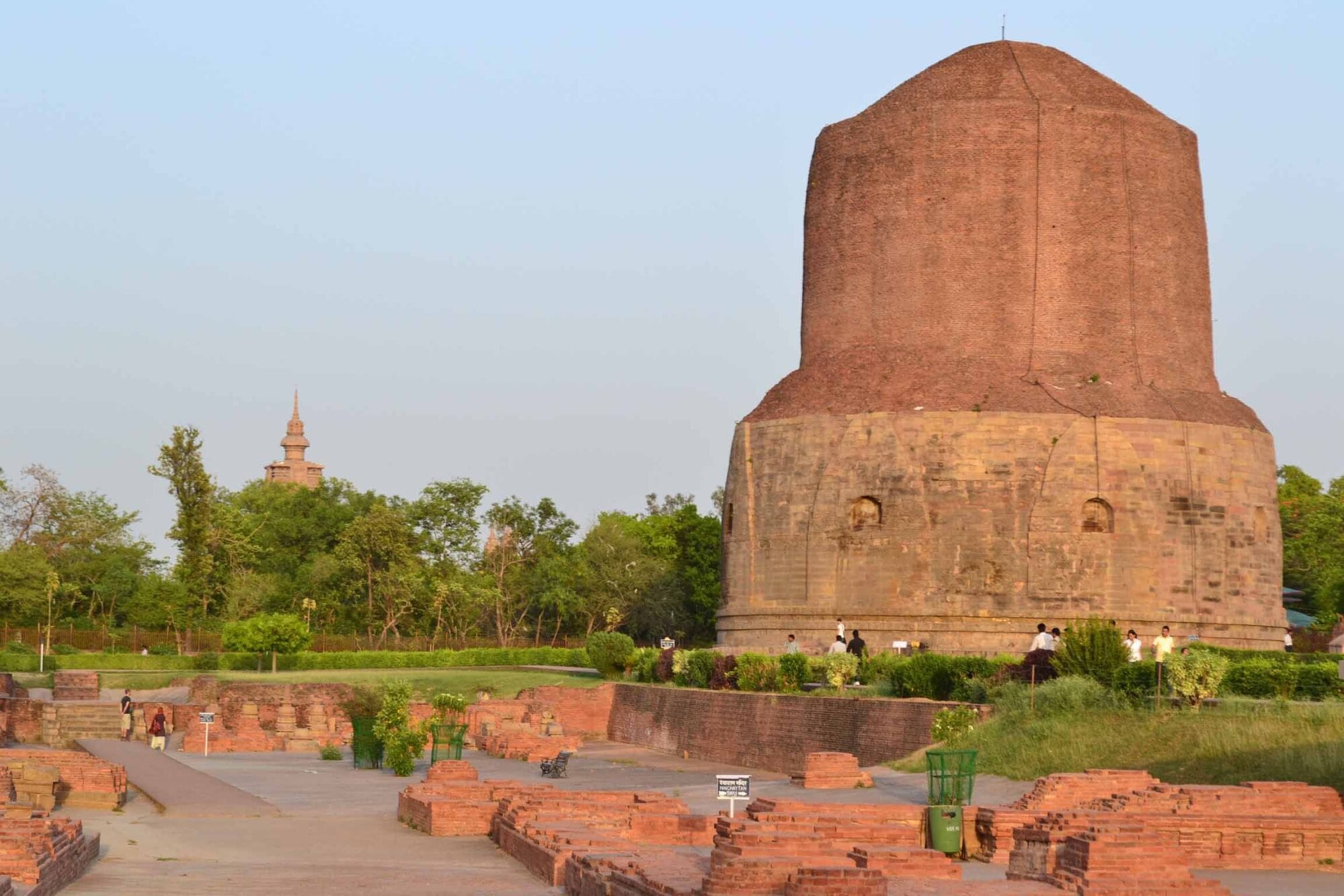Indian History
Land of Stupas: Sarnath
- 05 Feb 2019
- 5 min read
(This news analysis is based on the article “Stupa-hopping in Sarnath” by art historian Rana Safvi which appeared in The Hindu on 3rd February, 2019.)
Sarnath, Varanasi is known for two things: Buddha gave his first sermon and for the Ashoka Pillar.
- In ancient times, this place was known by many names — Rishipatana, Mrigadava and Mrigadaya. The word Sarnath comes from a corruption of the name Saranganatha (lord of deer).
- The ashes of the Buddha were buried in stupas built at locations associated with important events in the Buddha’s life including:
- Lumbini (where he was born), Bodh Gaya (where he achieved Enlightenment), Deer Park at Sarnath (where he preached his first sermon sharing the Four Noble Truths (also called the dharma or the law), and Kushinagara (where he died).
- The choice of these sites and others were based on both real and legendary events.
Stupas at Sarnath
- Two hundred years after Buddha, the Mauryan emperor, Ashoka, fought the battle of Kalinga and, disgusted by the bloodshed, became a Buddhist.
- Ashoka built many beautiful stupas and monasteries in Sarnath.
- Sir Alexander Cunningham (First Director-General of Archaeological Survey of India), excavated the Dhamekh, Dharmarajika, and Chaukhandi stupas along with a monastery and temple between 1834 and 1836.
- According to an inscription at Chaukhandi stupa, Humayun sought refuge in Sarnath when he was escaping from the battle of Chausa.
- Note: The battle of Chausa was fought between the Mughal emperor, Humayun, and the Afghan, Sher Shah Suri in 1539 at Chausa (modern-day Bihar, India).
- Many excavations followed these, the most famous among them being the 1904-05 excavation by Friedrich Oscar Oertel of the Ashoka Pillar, including the Lion Capital.
Invasions and Restorations
- Dharmarajika stupa is the one said to have been built by Ashoka to commemorate Buddha’s first sermon.
- After Ashoka, the other rulers who added to Sarnath’s glory were the Kushans, the Guptas and Harshavardhana.
- Under the Guptas, the Dhamekh stupa (synonymous with Sarnath) was encased with stone-carved floral designs.
- Sarnath suffered from the Huna invasions, but Harshavardhana later restored some of the earlier buildings. The Chinese pilgrim Hiuen-Tsang (602-664) left detailed accounts of the Dharmarajika stupa and Ashoka’s lion pillar.
- Sarnath also suffered when it was attacked by Mahmud of Ghazni in the 11th century. After that, Mahipala, the Pala king, restored the monuments.
- The last great monument of Sarnath, a monastery named Dharmachakra Jina Vihara was built in the 11th century by Kumaradevi, wife of Govindachanda of the Gahadavala dynasty.
State Emblem
- The state emblem of India is an adaptation from the Sarnath Lion Capital of Ashoka.
- In the original, there are four lions, standing back to back, mounted on an abacus with a frieze carrying sculptures in high relief of an elephant, a galloping horse, a bull and a lion separated by intervening wheels over a bell-shaped lotus.
- Carved out of a single block of polished sandstone, the Capital is crowned by the Wheel of the Law (Dharma Chakra).
- In the state emblem, adopted by the Government of India on 26 January 1950, only three lions are visible, the fourth being hidden from view.
- The wheel appears in relief in the centre of the abacus with a bull on right and a horse on left and the outlines of other wheels on extreme right and left.
- The bell-shaped lotus has been omitted.
- The words Satyameva Jayate from Mundaka Upanishad, meaning 'Truth Alone Triumphs', are inscribed below the abacus in Devanagari script.







